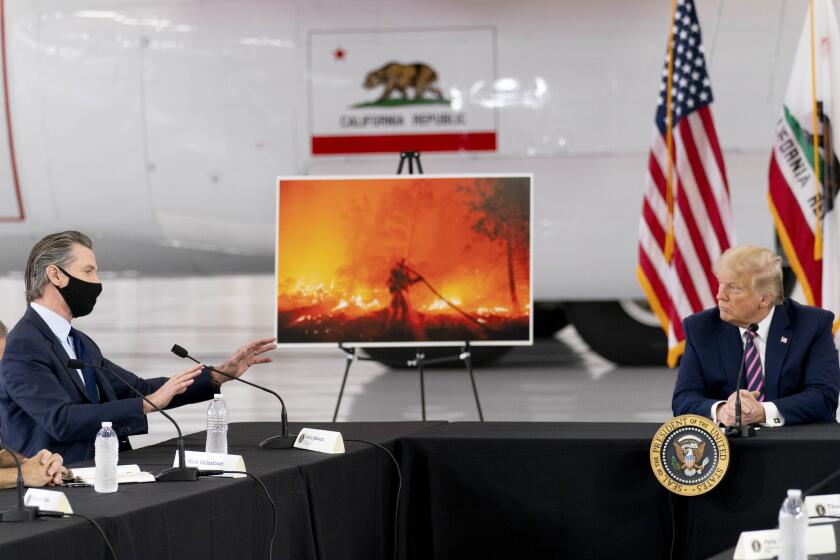U.S. May Unveil Debt Plan at Talks With Allies
WASHINGTON — The Bush Administration may complete work on a new Third World debt strategy in time for a meeting Feb. 3 of finance ministers and central bankers of the United States and its six major economic allies, U.S. officials said Wednesday.
Although the prospect is not a certainty, a senior Treasury Department official said the new Administration will try to complete basic decisions on a plan in time for the February session.
If that is not possible, he said, at least U.S. policy-makers will be able to outline their general thinking on how to handle the growing Third World debt problem. The allies have indicated that they plan to press for some change at the meeting.
Meeting in Washington
The disclosures came as the seven--the United States, Japan, West Germany, Britain, France, Italy and Canada--formally set Feb. 3 as the date for the high-level meeting. The session had been anticipated for weeks, but until Wednesday no date had been released.
The meeting at the Treasury Department building in Washington will be the first time that the Group of Seven, as it is known informally, has met since just before the International Monetary Fund’s annual meeting in Berlin late last September.
A senior Treasury official said the ministers hope to keep the meeting “low-key” and, in an unusual move, probably will not even issue a written communique or policy summary at the session’s conclusion.
He said current upper and lower limits for the dollar and other major currencies are likely to remain unchanged.
The push to develop a new proposal for easing the Third World’s debt burden constitutes a change from the policies of the Reagan Administration, which has long insisted that no changes are needed.
At the request of President-elect George Bush, the Treasury has reviewed the previous debt strategy and is exploring ways to alter it in hopes of encouraging commercial banks to reduce the debt of the larger Latin American countries.
Although no formal decisions have been made on the new strategy, officials say they are considering plans to ease tax and banking regulations to allow banks to write down more of the Latin American loan portfolios without suffering major financial losses.
At the session, Washington is also expected to renew pressure on West Germany and Japan to take new steps to help the United States cut its trade deficit, in part by spurring more consumer demand in those countries.
Finance ministers of the six other countries are expected to prod the United States to reduce its huge federal budget deficit, which is regarded as a major contributor to the outsized American trade imbalance.
U.S. officials say the meeting is intended partly as a get-acquainted session, to enable economic policy-makers from other countries to sound out the new Administration on what policies it intends to follow. The session is the first following Bush’s inauguration.
Communiques Awaited
Although Treasury Secretary Nicholas F. Brady has been in office since September, he has met his counterparts from the Group of Seven countries only once. And Japan has a new finance minister, Tatsuo Murayama.
The decision to avoid a formal communique, if possible, marked a departure from previous practice. Indeed, since the group first began issuing communiques, in September, 1985, analysts and financial markets have awaited its every word.
But U.S. officials say the ministers were disappointed after the September meeting, when an apparently innocuous change of wording on exchange-rate ranges was misinterpreted as a sign of a policy change--forcing central banks to come in later and prop up the dollar.
“We really don’t see any great sea-change--or even a minor sea-change,” the U.S. official told reporters. He said there are fears that allowing the session to be couched as a critical decision-making session “could be counterproductive.”
In discussing the review of the Administration’s global debt strategy, the official said strategists still have not decided whether to draft a new policy on Third World debt or “take the old Baker Plan” and update it.
The Baker Plan, outlined in fall of 1985 by then-Secretary of the Treasury James A. Baker III, called for commercial banks to increase their lending to Third World countries in exchange for stepped-up efforts by their governments to restructure their economies.
Baker, now Bush’s nominee to be secretary of state, conceded at a confirmation hearing Tuesday that he had been “disappointed” at the progress on both those fronts and called for refocusing the debt strategy on reducing the existing debt rather than refinancing it.
More to Read
Get the L.A. Times Politics newsletter
Deeply reported insights into legislation, politics and policy from Sacramento, Washington and beyond. In your inbox three times per week.
You may occasionally receive promotional content from the Los Angeles Times.










